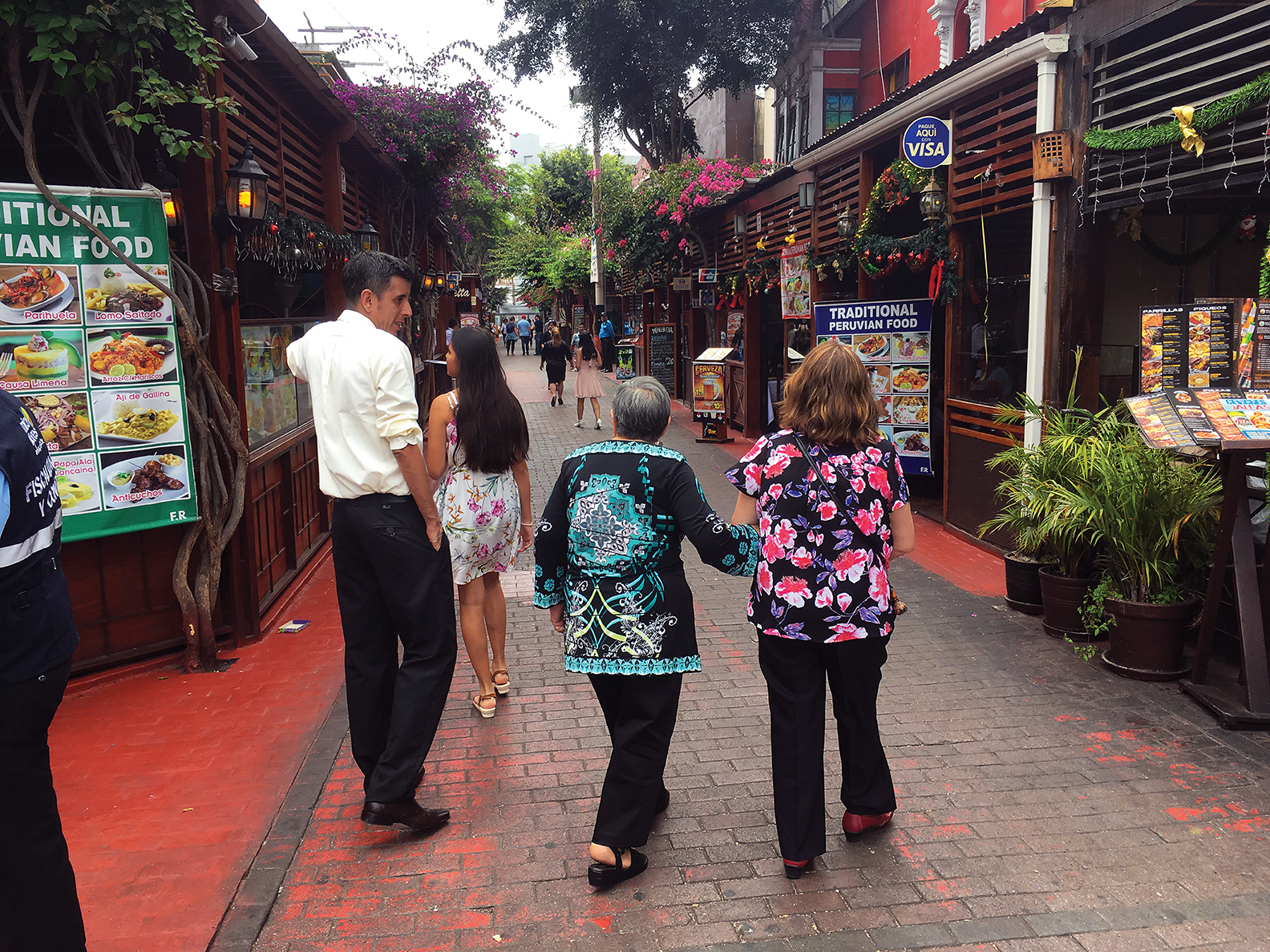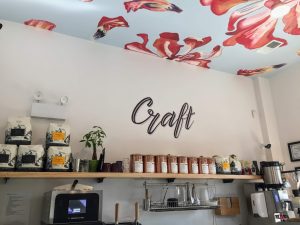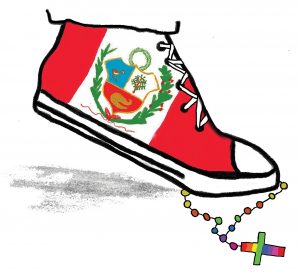But a valuable skill for maneuvering Lima’s streets.
“Two for S/.20, my queens!”
By Sophie Pokorny
LIMA BOASTS SOME very aggressive salespeople. Although meant to be welcoming and enticing, they often seem desperate and unappealing.
In celebration of arriving in Peru, the group of us went on a hunt for drinks in Lima.
We ended up at a street lined with bars. It was not until we entered that I realized that this was a place meant for tourists.
We had barely set foot in the pedestrian walkway when people were already approaching us, offering drinks for happy hour, “2 for S/.20 [soles],” and delicious food. At one point it was like a war between two businesses as their hosts began to pull us in different directions, each trying to convince us that the competitor was lying about their cut-rate deals.
We almost decided to leave out of confusion and slight panic until one them, who was continuously calling us, “My queens! My queens!” offered us 2 for 20-soles (around US$ 6) drinks, a free Pisco sour and the establishment’s WiFi password.
We followed him in, leaving the other disappointed host and everyone else waiting along the street. When we sat down, he gave us the remote to his TV so we could play whatever music we wanted; it was all just a ruse since our drinks weren’t as good as we had been hoping. We could see him boasting to another host outside that he had gotten the five of us into his restaurant, but we left not too long after, disappointing him.

Restaurant recruitment
By Jordan Clay
IN THE UNITED STATES, choosing a restaurant is a casual, even boring task. In Lima, Peru, the atmosphere on the streets, filled with bars and restaurants eager to acquire your business, is anything but casual.
Desperate for you to choose them, hosts play tug-of-war against each other, and you are the rope. You are pulled in every direction, dodging promises of free drinks and WiFi codes, while never actually getting a chance to see the menu. It can be an overwhelming experience for the indecisive or perhaps a thrill for those who like to be persuaded.
While wandering semi-aimlessly down a normal street in Lima, absentmindedly scouting for a potential spot for drinks, we were suddenly bombarded with requests from all directions to “come in, have a drink, free drink, come dance, no don’t go in there, come here, you don’t want their food, ours is better,” and so on.
At one point, two hosts began arguing over our group, splitting us in two, and going back and forth with each other over whom we should choose. They had a lighthearted tone, but they were also very intense. For a moment I was too nervous to choose, not wanting to upset the loser.
Eventually we chose the host who offered us free WiFi and the option to control the music, and as we sat and enjoyed our drinks. I tuned out the noise of hosts calling out to other passersby, as they had done to us just moments before.

Haggling at the market
By Jordan Clay
BEFORE ARRIVING IN PERU, I was told that the ability to haggle with vendors would be an invaluable skill. This made me nervous, as I’d never considered haggling one of my strong suits.
I had this idea that haggling over prices with locals was rude; I believe in paying for quality, especially when something is handmade. However, it quickly became obvious to me that people in Peru, specifically at the Indian Market and other similar markets, don’t just expect price negotiations, they encourage it.
Often a merchant will name a price, then immediately offer a lower price, or even ask me to name what I am willing to pay. Their initial price is almost always an inflated one, based on the assumption that I will refuse to pay it and offer something lower.
“It is worth 50 soles, but for you,” [insert pause], “45.”
“How about 40?” I’ll retort. “40? 40 is fine,” and just like that, we’ve come to an agreement.
As I have been struggling with Spanish since my arrival in this country, the language barrier sometimes comes into play with these negotiations. When dealing with a merchant who understands no English—as I am someone who understands little Spanish—we had to be a little creative with communication.
I had been interested in buying local paintings. While discussing prices of a piece of artwork, an artist takes out a calculator, sets it to zero and places it in my hand. He points to the calculator, then points to the painting.
I am extremely confused, thinking he is trying to tell me the price of the painting is zero. It takes me entirely too long to realize that, no, he is not asking me to steal his work, but rather he is asking me to name my price. I later realize this is a common tactic for merchants to evade the language barrier between buyer and seller.
Whether it’s verbal or visual, I’ve come to realize that haggling prices, at least at a local level, is a common practice in Peru, and my fear of offending has all but been overcome.



























Be First to Comment